Childhood obesity is rising globally. According to The Economist’s recent “A World Map of Childhood Obesity,” many countries are grappling with increasing rates of childhood overweight and obesity. While a multitude of factors contribute - lifestyle, physical activity, socio-economic, cultural norms — one key area parents can influence directly is infant and toddler nutrition. One move toward healthier habits: making your baby’s food at home instead of depending on store-bought pouches or ready-made baby meals
Here’s why homemade baby food can give your child a better start, plus practical tips for doing so
Understanding the Context: Childhood Obesity & Early Nutrition
Early feeding habits set the stage for lifetime eating behaviors. According to The Economist, many countries are seeing elevated childhood obesity, which often traces back into early diet patterns — what infants are fed, how often and how varied is the diet may affect taste preferences, metabolic programming and long-term health risks. When we feed babies from pre-made pouches, we may unwittingly introduce issues: less varied textures, higher sugar or sodium content and a less diverse diet.
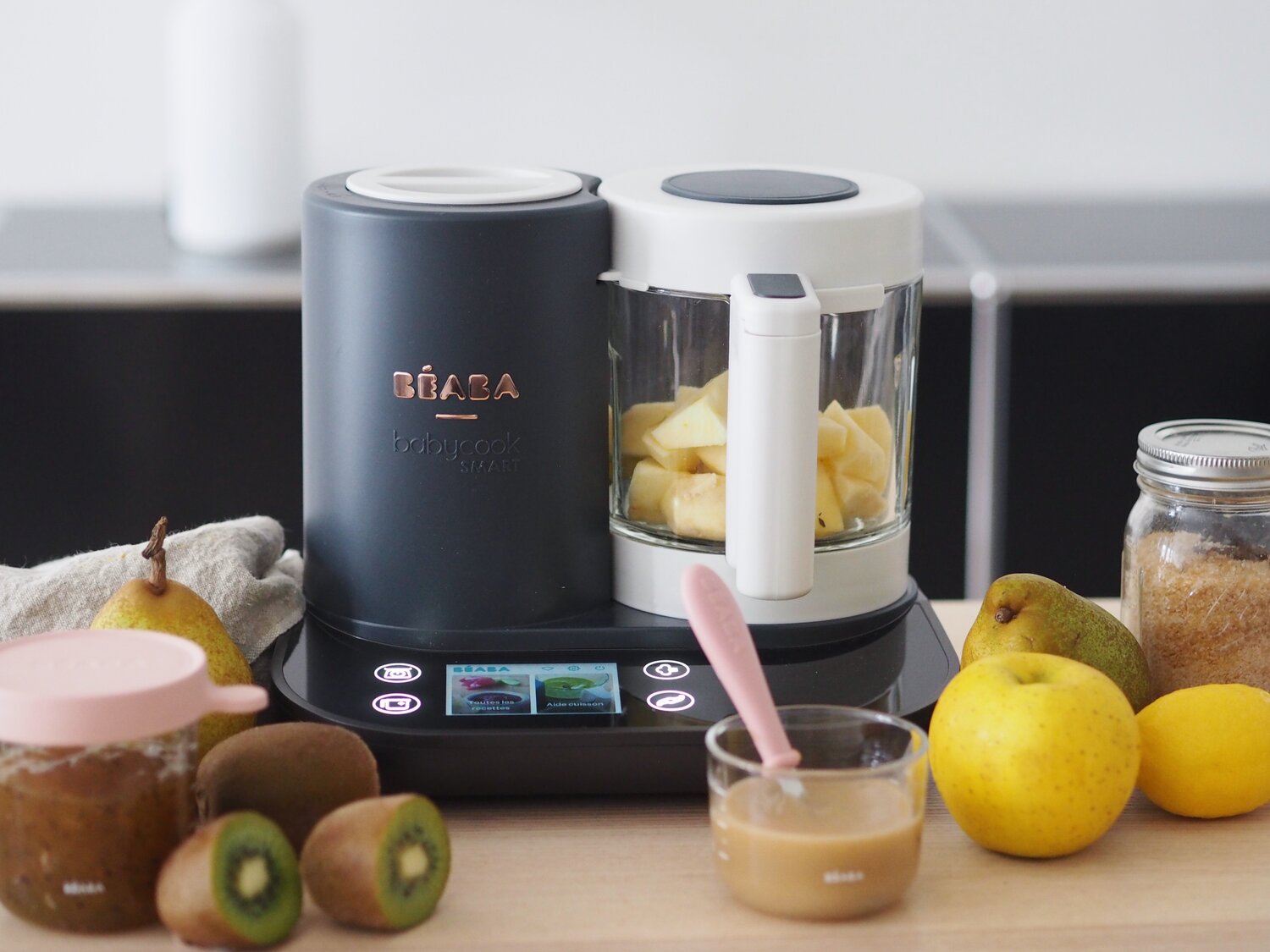
What Are the Drawbacks of Store-Bought Baby Food Pouches?
While pre-made pouches are convenient, there are several drawbacks to consider:
-
Hidden Sugars or Unbalanced Nutrients
Some pouches include added sugars, sweet fruit purees or juices to enhance flavour. Over time, frequent exposure to sweeter foods can shape your baby’s palate, making less sweet foods less appealing -
High Sodium or Additive Contents
Some ready-made foods might have more sodium, preservatives or stabilisers than you’d expect. These can be harmful for infants who have more sensitive kidneys and metabolisms -
Limited Variety of Texture and Taste
Pouches often promote smooth purees. Babies need exposure to different textures (lumpy, mashed, soft chunks) to encourage speech-development through jaw movement, chewing skills, and to reduce risk of picky eating later -
Cost Over Time
Although individual pouches may seem affordable, making food at home tends to be more cost-efficient, especially if you cook in batches using seasonal produce -
Environmental Impact
Disposable pouches often involve plastic, difficult recycling or packaging waste. Homemade meals reduce packaging waste and often have smaller carbon footprints -
Control Over Ingredients
You choose the exact ingredients, their quality, whether to use organic, minimal processing, avoiding artificial flavours, etc.
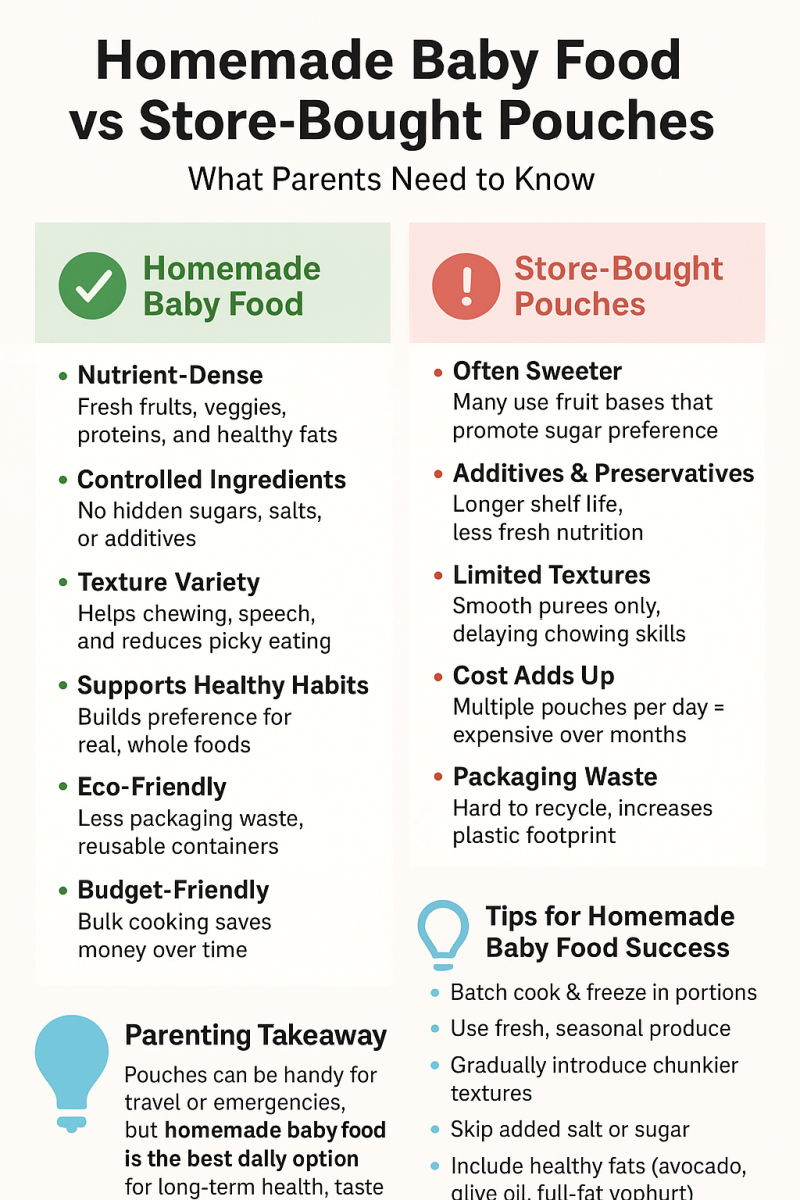
Benefits of Homemade Baby Food
By contrast, making your baby’s food at home carries many advantages:
-
Better Nutrient Density: Fresh vegetables, lean proteins, and healthy fats (like avocado or olive oil) can be used optimally. You control portions, cooking methods (steaming vs over-cooking)
-
Healthier Taste Development: Babies introduced to varieties of tastes - savory, bitter (e.g. greens), mild spices - learn to appreciate whole foods rather than overly sweet purees. That helps reduce later sugar cravings or preference for processed foods
-
Support for Oral & Motor Development: As mentioned, textures matter. Homemade food can be adjusted gradually from smooth to chunky, helping chew, swallow and oral motor skills develop
-
Potential Reduced Risk of Childhood Obesity: Given that The Economist highlights rising obesity, feeding babies less processed, lower sugar, whole food diets may help mitigate risk by developing healthier eating patterns from infancy
-
Empowerment & Mindful Eating: When parents prepare their baby’s meals, there’s more awareness of nutrition, portions, and family eating habits overall, which often influences what the rest of the family eats
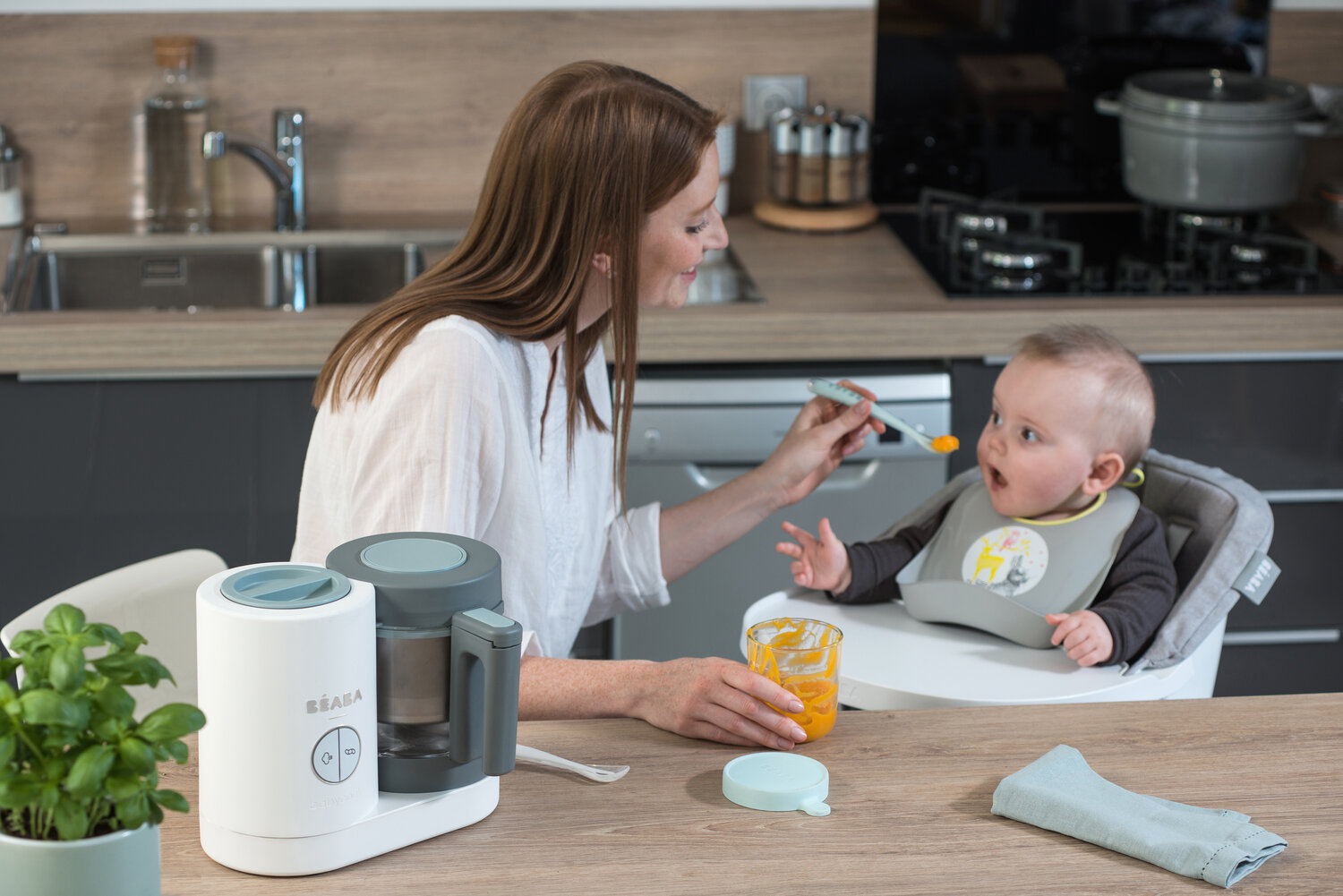
Practical Ways to Make Your Own Baby Food
Here are practical tips and tools for getting started:
-
Batch Cook & Freeze: Make big batches of purees or small meals, portion them into ice cube trays or small containers, freeze, then thaw. Saves time later
-
Seasonal Produce: Use fresh, local, seasonal fruits & veggies — cheaper, more nutritious, varied
-
Simple Equipment: A good blender or food processor, steamer basket, and storage containers with tight lids is often all you need
-
Gradually Increase Texture: Start with smoother purees → move to mashed → soft / small lumps → finger foods, as baby’s chewing skills develop
-
Avoid Salt & Added Sugar: Babies don’t need salt added; natural flavour from ingredients should suffice. Keep sweet fruit purees occasional rather than main
-
Use Healthy Fats: Small amounts of better fat sources: olive oil, avocado, full-fat yoghurt etc. Important for brain development
-
Hygiene & Storage: Use safe storage, proper labeling (date), avoid cross-contamination, ensure foods are cooked fully and cooled safely
The rise of childhood obesity globally, is a wake-up call. While not all risks can be avoided, parents have real influence during the early feeding years. Making your baby's food at home - with fresh, wholesome ingredients, varied textures and minimal processing - can help shape better lifelong eating habits, support healthy growth, and steer clear of pitfalls associated with over-dependence on pouches or pre-made meals
Choosing to cook for your baby is an investment in their long-term health. It may take more time, planning and effort, but the benefits - nutritional, developmental, environmental, and economic are substantial
Pouches can be handy for travel or emergencies, but homemade baby food is the best daily option for long-term health, taste development and lowering risks of childhood obesity
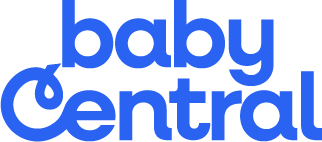



















Because preventing childhood obesity starts with your baby’s first bites